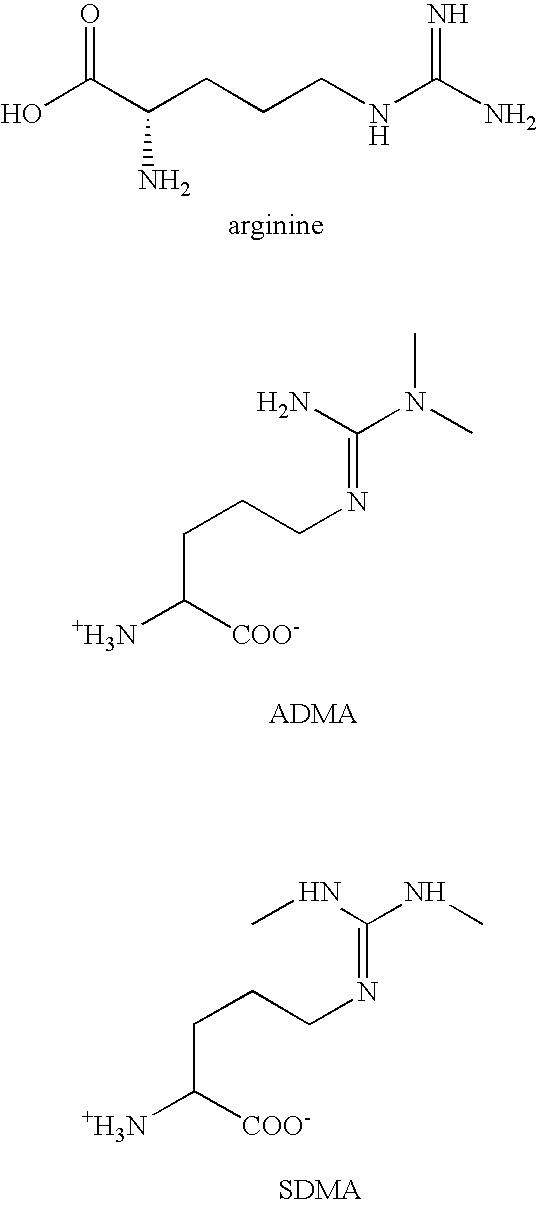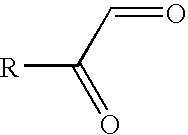Methods for detecting asymmetric dimethylarginine in a biological sample
- Summary
- Abstract
- Description
- Claims
- Application Information
AI Technical Summary
Benefits of technology
Problems solved by technology
Method used
Image
Examples
example 1
Method for Modifying SDMA and Arginine
[0110] There are two isoforms of dimethylarginine--asymmetric (SDMA) and symmetric (ADMA), depending on how the methyl groups are distributed on the guanidino function group of arginine. Any detection method for ADMA needs to be able to distinguish among ADMA, SDMA, and arginine, which are structurally very similar. Some HPLC system can achieve the resolution; however, it suffers from the drawbacks mentioned above. Available antibodies against dimethylarginine, though improving efficiency and sensitivity, indiscriminately bind to both ADMA and SDMA (e.g., ab413, Abcam, Cambridge Science Park, UK). The following approach utilizes a chemical reaction that specifically modifies SDMA, but not ADMA. SDMA, but not ADMA, will react with .alpha.-dicarbonyl compounds, leaving the modified SDMA to sufficiently differ from ADMA such that an antibody directed against dimethylarginines can then be used to selectively detect ADMA. This method also enhances th...
PUM
 Login to View More
Login to View More Abstract
Description
Claims
Application Information
 Login to View More
Login to View More - R&D
- Intellectual Property
- Life Sciences
- Materials
- Tech Scout
- Unparalleled Data Quality
- Higher Quality Content
- 60% Fewer Hallucinations
Browse by: Latest US Patents, China's latest patents, Technical Efficacy Thesaurus, Application Domain, Technology Topic, Popular Technical Reports.
© 2025 PatSnap. All rights reserved.Legal|Privacy policy|Modern Slavery Act Transparency Statement|Sitemap|About US| Contact US: help@patsnap.com



